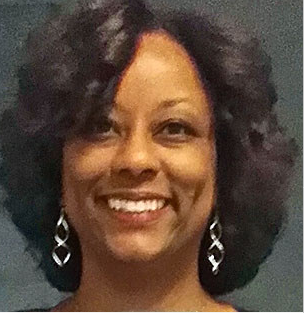In honor of Black History Month, Milwaukee native and LISC program officer Sakuri Fears reflects on how a vanguard project will provide much-needed housing and energy in an historic Black neighborhood. It will also revive the Black Holocaust Museum, a vital cultural touchstone and meeting ground for African-American and all Milwaukeeans.
For two nights last August, the city of Milwaukee erupted in protest and violence after a young African-American man was fatally shot by a police officer. Businesses in the Sherman Park neighborhood, where the shooting took place and where I live, were torched, cars flipped and set ablaze. More gunfire rang out, injuring a police officer and a resident.
In the days that followed, as neighbors swept up the debris of burned shops, and political and faith leaders urged calm, I reflected on how the unrest was another flashpoint on a long historical continuum. It was a gut-wrenching demand for recognition, and for social and economic equity in our city, which is often described as America’s most segregated. And it could have happened in any American city, anywhere.
I also reflected on how acutely Milwaukee needs a prominent destination for African-Americans to gather, converse, debate and organize. A place for young people to form and understand their cultural identity. A place like that could make the difference in whether or not there are more months like last August.
As a community developer, I know that the places we live and the assets of our neighborhoods are an integral part of the healing that needs to happen both internally and across the divides of race and class. Part of our mandate at LISC is creating neighborhoods of opportunity—neighborhoods that honor our diverse histories and community identities.
For me, there’s one project that offers a particularly shining example of how to address those community needs and elevate the history of Black Milwaukee. Known as “The Griot Project”, it is an affordable housing and community space that will include 60 family apartments and artist live/work spaces.
The Griot is the brainchild of Melissa Goins, a graduate of LISC Milwaukee’s Associates in Commercial Real Estate (ACRE) training program. She purposely located it in the Bronzeville district, once the 20th-century heart of African-American culture and entertainment in Milwaukee, until it was systematically destroyed in the 1960s, largely through eminent domain for freeway construction. “Griot” comes from the term for traveling poets or storytellers who maintain a tradition of oral history rooted in West African culture.
The project, which LISC seeded with a predevelopment loan, will join a blighted but beautiful 19th-century school building with new construction and is designed to activate a long neglected corner of the city. But perhaps its most remarkable feature will be a newly built space for America’s Black Holocaust Museum, a history museum founded in Milwaukee in 1984 by Dr. James Cameron, the only known survivor of a lynching, which took place in Indiana in 1930.
For years, the museum attracted local, national, and international visitors, many of whom took guided tours led by “griots” who interpreted the exhibits. Dr. Cameron spoke daily with most visitors about his survival experience, making for a very special encounter with living history. In 2008, in the wake of his death and as the recession crept into Milwaukee, the museum was forced to close and move to an online format.
I was very fortunate to have encountered Dr. Cameron on many trips to the museum when I was in my late teens and twenties. These were formative experiences. He was a humble, unassuming presence—the first time I met him I had no idea who he was—but the information he shared packed a punch. Dr. Cameron didn’t sugarcoat things: he invited us to revisit a part of history that no one was talking about.
I’ll never forget an installation that served as an entry to the exhibits, a claustrophobia-inducing hallway that replicated the middle passage of the slave trade. It was alive with sound and images, and you could begin to imagine, in a visceral way, what it took to survive with hundreds and hundreds of people chained down in the airless hull of a ship.
For a number of years after the museum closed, I worked at the Urban League, whose offices sat next to the museum’s vacant building. I probably passed that shuttered space thousands of times, and it was a daily reminder of the void that was left in our community.
Now, I feel we’re coming full circle. In the Griot, the museum will have a bricks and mortar home again and with it will be a destination where Milwaukee residents can gather, plan, and connect the present and future to the significance of the past. It is something I look forward to sharing with my children, who were born and raised in Milwaukee just as I was but who haven’t had the cultural touchstone that the museum was for my generation. And it is not only Black Milwaukeeans who will benefit; everyone will.
Because February is Black History month, the media and the broader public turn their attention to the legacy of the African-American past. But our history, and an invitation to leverage it for the greater good, are alive 365 days a year. Without equity, without broadly shared access to opportunity, progress can never be authentic. And by publicly recognizing and honoring our history—from the horrific injustice and suffering to the sublime and everyday achievements—everyone is enriched.
 ABOUT THE AUTHOR
ABOUT THE AUTHOR
Sakuri Fears, Program Officer
Sakuri, a graduate of LISC Milwaukee’s Associates in Commercial Real Estate (ACRE) training program, oversees our Financial Opportunity Centers and commercial corridors programs in Milwaukee. She gives financial and technical assistance to neighborhood partner organizations and works to strengthen collaborations among community-based organizations and other corporate, civic and public sector groups.